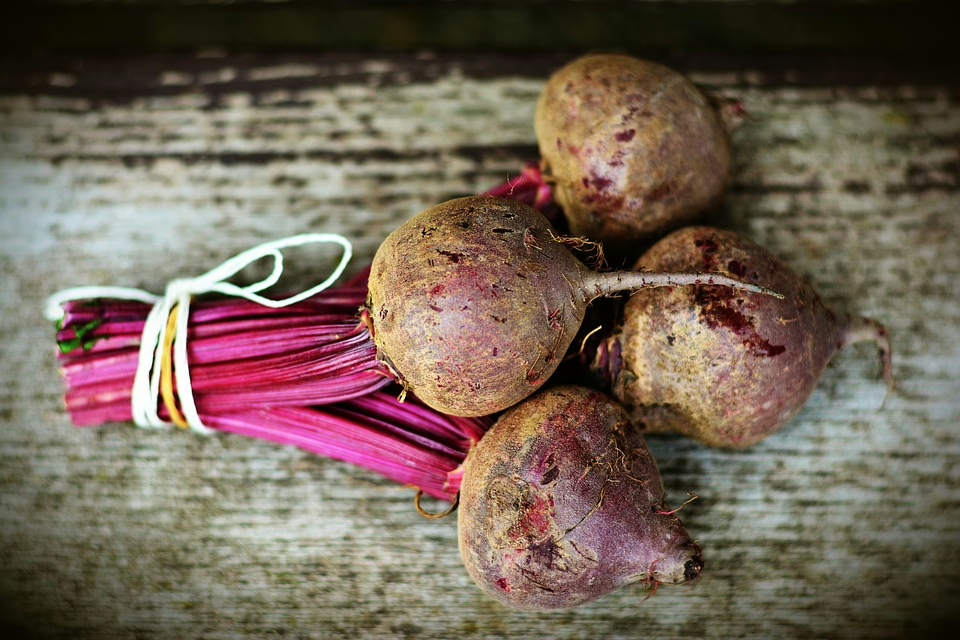Grow a Healthy Baby: Your Pregnancy Nutrition Checklist
Pregnancy is a transformative and exciting journey. It’s a time of incredible growth and development, not just for you as a mother, but also for the tiny human blossoming within you. This miraculous process depends heavily on the building blocks you provide – your nutrition. What you eat, or don’t eat, directly impacts your baby’s health, growth, and even their long-term well-being. Ensuring adequate nutrition during pregnancy is not just about satisfying cravings; it’s about laying a solid foundation for your child’s future. This comprehensive checklist will guide you through the essential nutrients, foods, and strategies you need to nourish yourself and your developing baby throughout each trimester and beyond.
Why is Pregnancy Nutrition So Important?
The nutrients you consume during pregnancy play a vital role in:
- Fetal Development: Nutrients like folate, iron, calcium, and protein are critical for the formation of the baby’s brain, spinal cord, bones, organs, and blood cells. Deficiencies in these nutrients can lead to birth defects, developmental delays, and other health problems.[1]
- Healthy Birth Weight: Adequate nutrition helps ensure your baby reaches a healthy birth weight, which is crucial for reducing the risk of complications at birth and throughout their life. Low birth weight babies are more susceptible to infections, respiratory problems, and long-term health issues.[2]
- Reduced Risk of Complications: Proper nutrition can lower your risk of pregnancy complications such as preeclampsia, gestational diabetes, and preterm labor.[3]
- Mother’s Health: Meeting the increased nutritional demands of pregnancy also supports your own health and well-being. It helps maintain your energy levels, strengthens your immune system, and prepares your body for labor, delivery, and breastfeeding.[4]
- Long-Term Health: Studies suggest that a mother’s nutrition during pregnancy can influence the child’s risk of developing chronic diseases like heart disease, diabetes, and obesity later in life.[5] This highlights the profound impact of prenatal nutrition on the child’s future health trajectory.
Navigating Your Pregnancy Nutrition Checklist: Trimester by Trimester
While the fundamental principles of healthy eating remain consistent throughout pregnancy, the specific nutritional needs may vary slightly from trimester to trimester. Here’s a trimester-specific breakdown of key nutrients and food recommendations:
First Trimester (Weeks 1-13): The Foundation is Laid
The first trimester is a period of rapid cell division and organ formation. It’s crucial to focus on foundational nutrients to support these critical processes.
- Folate/Folic Acid: This B vitamin is essential for preventing neural tube defects like spina bifida. Aim for at least 400 mcg of folic acid daily, ideally starting before conception.[6]
- Food Sources: Fortified cereals, leafy green vegetables (spinach, kale, romaine lettuce), beans, lentils, citrus fruits, avocado.
- Supplementation: A prenatal vitamin containing folic acid is highly recommended, especially in the first trimester.
- Vitamin B6: Can help alleviate nausea and vomiting, common in the first trimester.[7]
- Food Sources: Poultry, fish, bananas, potatoes, nuts, seeds.
- Protein: Vital for cell growth and development. Aim for at least 70-100 grams of protein per day.[8]
- Food Sources: Lean meats, poultry, fish (low-mercury), eggs, beans, lentils, tofu, nuts, seeds, dairy products.
- Iron: Supports increased blood volume and prevents anemia. Pregnancy increases the need for iron significantly. Aim for 27 mg of iron per day.[9]
- Food Sources: Lean red meat, poultry, fish, beans, lentils, spinach, fortified cereals. Consume iron-rich foods with vitamin C to enhance absorption.
- Supplementation: Your doctor may recommend an iron supplement if your dietary intake is insufficient.
- Hydration: Staying adequately hydrated is crucial for overall health and can help with morning sickness. Aim for at least 8-10 glasses of water per day.[10]
- Tips: Carry a water bottle with you throughout the day. Eat water-rich fruits and vegetables like watermelon and cucumbers.
First Trimester Checklist:
- [ ] Begin taking a prenatal vitamin containing at least 400 mcg of folic acid.
- [ ] Include folate-rich foods in your daily diet.
- [ ] Prioritize protein intake from various sources.
- [ ] Consume iron-rich foods and pair them with vitamin C.
- [ ] Stay adequately hydrated.
- [ ] Listen to your body and eat small, frequent meals if nausea is a problem.
- [ ] Avoid processed foods, sugary drinks, and excessive caffeine.
- [ ] Consult with your doctor or a registered dietitian for personalized advice.
Second Trimester (Weeks 14-27): Growth and Development Accelerate
The second trimester is often called the “honeymoon” phase of pregnancy. Morning sickness usually subsides, and energy levels increase. This is a time of rapid growth for your baby, requiring increased intake of specific nutrients.
- Calcium: Crucial for bone and teeth development in your baby. Aim for 1000 mg of calcium per day.[11]
- Food Sources: Dairy products (milk, yogurt, cheese), leafy green vegetables, fortified plant-based milk, tofu, salmon (with bones).
- Vitamin D: Works in conjunction with calcium to support bone health and immune function. Aim for 600 IU (15 mcg) of vitamin D per day.[12]
- Food Sources: Fortified milk, fatty fish (salmon, tuna), egg yolks, fortified cereals.
- Sunlight: Sunlight exposure can also help your body produce vitamin D.
- Supplementation: Many prenatal vitamins contain vitamin D. Your doctor may recommend a separate supplement if your levels are low.
- Omega-3 Fatty Acids (DHA & EPA): Essential for brain and eye development. Aim for at least 200-300 mg of DHA per day.[13]
- Food Sources: Fatty fish (salmon, tuna, sardines), flaxseeds, chia seeds, walnuts, fortified eggs.
- Supplementation: A DHA supplement is often recommended, especially if you don’t consume fatty fish regularly.
- Fiber: Helps prevent constipation, a common complaint during pregnancy. Aim for 25-35 grams of fiber per day.[14]
- Food Sources: Whole grains, fruits, vegetables, beans, lentils, nuts, seeds.
Second Trimester Checklist:
- [ ] Increase calcium intake through diet and/or supplementation.
- [ ] Ensure adequate vitamin D intake through diet, sunlight, and/or supplementation.
- [ ] Include omega-3 fatty acids in your diet or consider a supplement.
- [ ] Consume plenty of fiber-rich foods.
- [ ] Continue to prioritize protein and iron.
- [ ] Maintain adequate hydration.
- [ ] Avoid empty calories from processed foods and sugary drinks.
- [ ] Consider taking a childbirth education class to learn about labor and delivery.
Third Trimester (Weeks 28-40): Preparing for Delivery and Lactation
The third trimester focuses on final growth and preparation for labor and delivery. Your baby is rapidly gaining weight and accumulating nutrient stores.
- Iron: Continue to prioritize iron intake to support increased blood volume and prevent anemia in both you and your baby.[9]
- Choline: Important for brain development and may help reduce the risk of neural tube defects. Aim for 450 mg of choline per day.[15]
- Food Sources: Eggs, beef liver, chicken, fish, beans, broccoli.
- Supplementation: While some prenatal vitamins contain choline, many do not. Consider a separate choline supplement if you are not getting enough through diet.
- Magnesium: Helps with muscle function and may reduce the risk of preterm labor. Aim for 350-360 mg of magnesium per day.[16]
- Food Sources: Leafy green vegetables, nuts, seeds, whole grains, avocado.
- Probiotics: May help support a healthy gut microbiome and reduce the risk of vaginal infections. [17]
- Food Sources: Yogurt (with live and active cultures), kefir, sauerkraut, kimchi, kombucha.
- Supplementation: Consider a probiotic supplement if you don’t consume fermented foods regularly.
Third Trimester Checklist:
- [ ] Continue to prioritize iron and calcium.
- [ ] Ensure adequate choline intake through diet and/or supplementation.
- [ ] Include magnesium-rich foods in your diet.
- [ ] Consider incorporating probiotics into your diet.
- [ ] Maintain adequate hydration.
- [ ] Eat smaller, more frequent meals to manage heartburn.
- [ ] Prepare for breastfeeding by learning about proper latch and milk supply.
- [ ] Pack your hospital bag.
Foods to Embrace Throughout Pregnancy:
- Lean Protein Sources: Chicken, turkey, fish (low-mercury), beans, lentils, tofu, tempeh.
- Whole Grains: Brown rice, quinoa, oats, whole-wheat bread, whole-wheat pasta.
- Fruits: Berries, apples, bananas, oranges, avocados, melons.
- Vegetables: Leafy greens, broccoli, carrots, sweet potatoes, bell peppers.
- Dairy Products: Milk, yogurt, cheese (pasteurized).
- Healthy Fats: Avocado, nuts, seeds, olive oil.
Foods to Avoid During Pregnancy:
- Raw or Undercooked Meat, Poultry, and Seafood: Can contain harmful bacteria like Salmonella and Listeria.
- High-Mercury Fish: Swordfish, shark, king mackerel, tilefish.
- Unpasteurized Dairy Products: Can contain Listeria bacteria.
- Raw Sprouts: Can contain bacteria like E. coli and Salmonella.
- Alcohol: No amount of alcohol is considered safe during pregnancy. [18]
- Excessive Caffeine: Limit caffeine intake to no more than 200 mg per day. [19]
- Processed Foods and Sugary Drinks: Provide empty calories and can contribute to gestational diabetes and excessive weight gain.
Addressing Common Pregnancy Discomforts Through Nutrition:
- Morning Sickness: Eat small, frequent meals. Avoid strong smells and greasy foods. Try ginger tea or ginger candies.
- Constipation: Increase fiber intake. Drink plenty of water. Engage in light exercise.
- Heartburn: Eat smaller, more frequent meals. Avoid spicy and fatty foods. Sit upright after eating.
- Leg Cramps: Stay hydrated. Consume potassium-rich foods like bananas. Stretch your legs before bed.
Beyond the Trimesters: Postpartum Nutrition for a Healthy Mother and Baby
The importance of nutrition doesn’t end with delivery. Postpartum nutrition is crucial for your recovery and for supporting breastfeeding if you choose to breastfeed.
- Continued Calorie Needs: Breastfeeding increases your calorie needs by approximately 500 calories per day.[20]
- Hydration: Stay well-hydrated to support milk production.
- Nutrient-Dense Foods: Focus on nutrient-dense foods to replenish your body’s stores and provide your baby with essential nutrients through breast milk.
- Iron: Continue to prioritize iron intake, especially if you experienced blood loss during delivery.
- Calcium: Continue to consume calcium-rich foods to maintain bone health.
- Omega-3 Fatty Acids: Continue to include omega-3 fatty acids in your diet to support your baby’s brain development.
Postpartum Nutrition Checklist:
- [ ] Increase your calorie intake by approximately 500 calories per day if breastfeeding.
- [ ] Stay well-hydrated.
- [ ] Focus on nutrient-dense foods.
- [ ] Continue to prioritize iron, calcium, and omega-3 fatty acids.
- [ ] Limit processed foods and sugary drinks.
- [ ] Rest and recover.
- [ ] Seek support from your healthcare provider or a lactation consultant.
Seeking Professional Guidance: The Importance of Personalized Nutrition Advice
This checklist provides a comprehensive overview of pregnancy nutrition, but it’s essential to remember that every pregnancy is unique. Consulting with your doctor, a registered dietitian, or a certified nutrition specialist is crucial for obtaining personalized advice based on your individual health history, dietary needs, and any specific conditions you may have.
A registered dietitian can:
- Assess your current dietary intake and identify any nutrient deficiencies.
- Develop a customized meal plan to meet your specific needs.
- Provide guidance on managing pregnancy-related discomforts through nutrition.
- Offer support and education on breastfeeding nutrition.
- Address any concerns or questions you may have about pregnancy nutrition.
Conclusion: Investing in a Healthy Future
Nourishing your body during pregnancy is one of the most profound investments you can make in your child’s future. By following this comprehensive nutrition checklist, embracing nutrient-rich foods, and seeking professional guidance, you can ensure a healthy pregnancy, support your baby’s optimal development, and lay the foundation for a lifetime of well-being. Remember, pregnancy is a journey, and every step you take towards nourishing yourself is a step towards nurturing a healthy and happy baby. Congratulations on this incredible adventure!
References:
[1] National Institutes of Health (NIH). (2023). Folate – Health Professional Fact Sheet. Retrieved from https://ods.od.nih.gov/factsheets/Folate-HealthProfessional/ [mfn 1] [2] World Health Organization (WHO). (2023). Low birth weight. Retrieved from https://www.who.int/news-room/fact-sheets/detail/low-birthweight [mfn 2] [3] American College of Obstetricians and Gynecologists (ACOG). (2022). Nutrition During Pregnancy. Retrieved from https://www.acog.org/womens-health/faqs/nutrition-during-pregnancy [mfn 3] [4] Centers for Disease Control and Prevention (CDC). (2023). Pregnancy. Retrieved from https://www.cdc.gov/pregnancy/index.htm [mfn 4] [5] Barker, D. J. P. (1990). The fetal and infant origins of adult disease. British Medical Journal, 301(6761), 1111-1115. [mfn 5] [6] ACOG Committee Opinion No. 495: Folic Acid for the Prevention of Neural Tube Defects. Obstetrics & Gynecology. 2011;117(3):757-758. [mfn 6] [7] Jewell, D., Young, G., & Jewell, P. (2003). Interventions for nausea and vomiting in early pregnancy. Cochrane Database of Systematic Reviews, (4), CD007575. [mfn 7] [8] Institute of Medicine (US) Committee on Nutritional Status During Pregnancy and Lactation. Nutrition During Pregnancy: Part I: Weight Gain: Part II: Nutrient Supplements. Washington (DC): National Academies Press (US); 1990. [mfn 8] [9] National Institutes of Health (NIH). (2023). Iron – Health Professional Fact Sheet. Retrieved from https://ods.od.nih.gov/factsheets/Iron-HealthProfessional/ [mfn 9] [10] Popkin, B. M., D’Anci, K. E., & Rosenberg, I. H. (2010). Water, hydration and health. Nutrition Reviews, 68(8), 439-458. [mfn 10] [11] National Institutes of Health (NIH). (2023). Calcium – Health Professional Fact Sheet. Retrieved from https://ods.od.nih.gov/factsheets/Calcium-HealthProfessional/ [mfn 11] [12] National Institutes of Health (NIH). (2023). Vitamin D – Health Professional Fact Sheet. Retrieved from https://ods.od.nih.gov/factsheets/VitaminD-HealthProfessional/ [mfn 12] [13] Coletta, J. M., Bell, S. J., & Roman, A. S. (2010). Omega-3 Fatty Acids and Pregnancy. Reviews in Obstetrics and Gynecology, 3(4), 163-171. [mfn 13] [14] Anderson, J. W., et al. “Health implications of dietary fiber.” Nutrition Reviews 56.1 (1998): 1-18. [mfn 14] [15] National Institutes of Health (NIH). (2023). Choline – Health Professional Fact Sheet. Retrieved from https://ods.od.nih.gov/factsheets/Choline-HealthProfessional/ [mfn 15] [16] National Institutes of Health (NIH). (2023). Magnesium – Health Professional Fact Sheet. Retrieved from https://ods.od.nih.gov/factsheets/Magnesium-HealthProfessional/ [mfn 16] [17] Reid, G., Bocking, A., & Burton, J. (2003). Use of Lactobacillus to prevent infection by pathogenic bacteria. Immunology and Cell Biology, 81(3), 171-177. [mfn 17] [18] Centers for Disease Control and Prevention (CDC). (2022). Alcohol Use in Pregnancy. Retrieved from https://www.cdc.gov/alcohol/fact-sheets/alcohol-use-in-pregnancy.htm [mfn 18] [19] American College of Obstetricians and Gynecologists (ACOG). (2021). Moderate Caffeine Consumption During Pregnancy. Retrieved from https://www.acog.org/clinical/faqs/caffeine-during-pregnancy [mfn 19] [20] Institute of Medicine (US) Committee on Nutritional Status During Pregnancy and Lactation. Nutrition During Lactation. Washington (DC): National Academies Press (US); 1991. [mfn 20]

























Add Comment